

Reducing stress and improving workflow for independent pharmacy employees

Chain pharmacies have established training protocols which keep their different job roles, including pharmacists, technicians, clerks, delivery persons, and their workflows in place across the organization up-to-date. In independent pharmacies, due to a lack of staff and resources, new employees often do not get proper training—causing disorganization and confusion—adding to stress, decreasing productivity, and increasing the chance for errors. Currently, there are no training programs designed specifically for small, independent pharmacies that addresses working in busy pharmacy environment and following the various workflows they are tasked with.
A new training system should be designed to give employees of independent pharmacies training to improve physical tasks, or job training which has the potential to lead to better job satisfaction, and increased productivity.
For this research study, the researcher observed the operations of an independent pharmacy, located in Austin, Texas, in business for approximately 3 years. The pharmacy has a total of 12 employees, including pharmacists, pharmacy technicians, and front desk clerks.
To understand the pain points, Interviews and surveys were conducted with six pharmacy technicians, two pharmacists, two owners, and 11 customers.
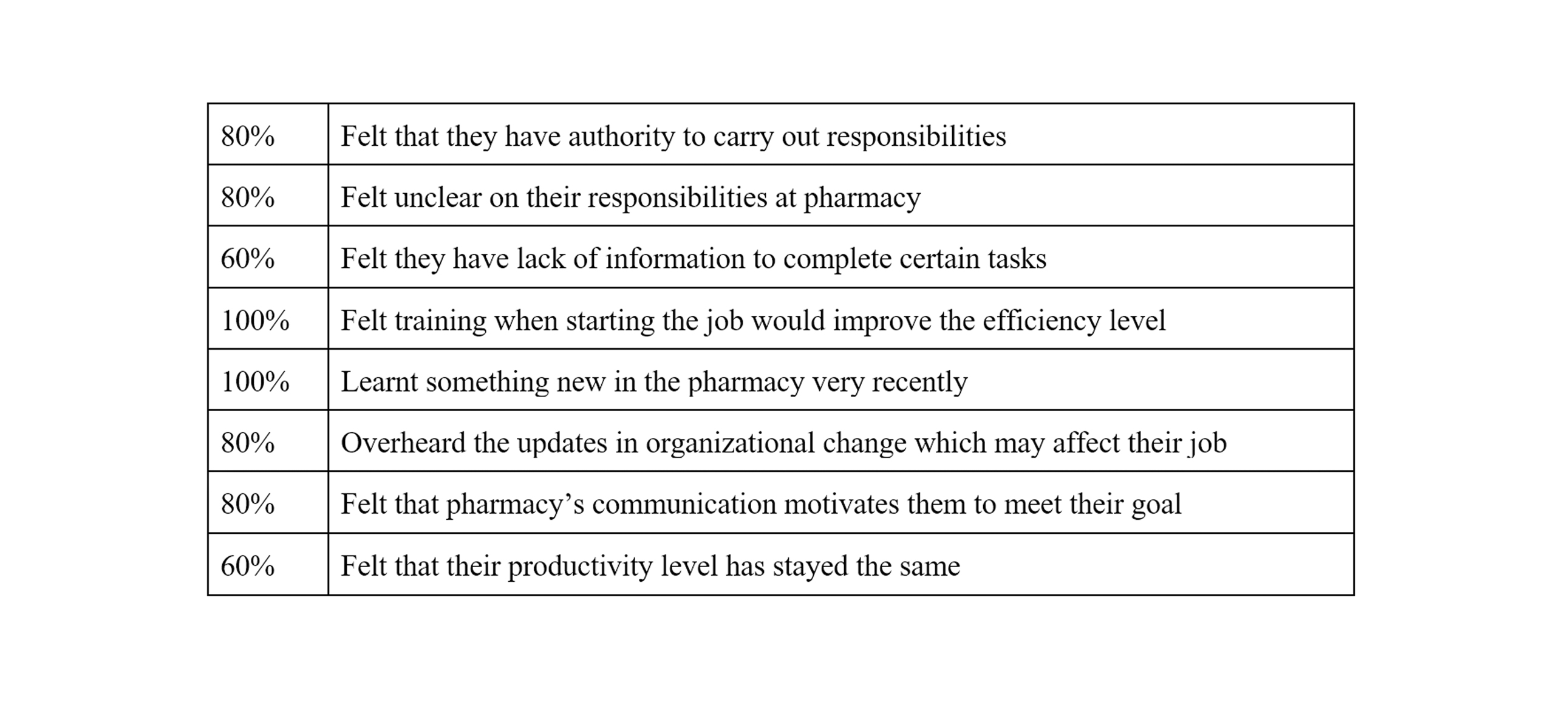
From the data of technicians survey above, it was discovered that there were a lot of room for improvement to help. More than half of the technicians felt unclear on their responsibilities at the pharmacy and lack of information to complete certain tasks, which indicated that technicians needed more training and knowledge on their job duties. All technicians agreed that given proper training would help improve efficiency level, which again indicates room for new training system.
The research process started with this step as it helps understand the needs of the project and research group. This step also prepared the design thinking research to escalate in the right direction.
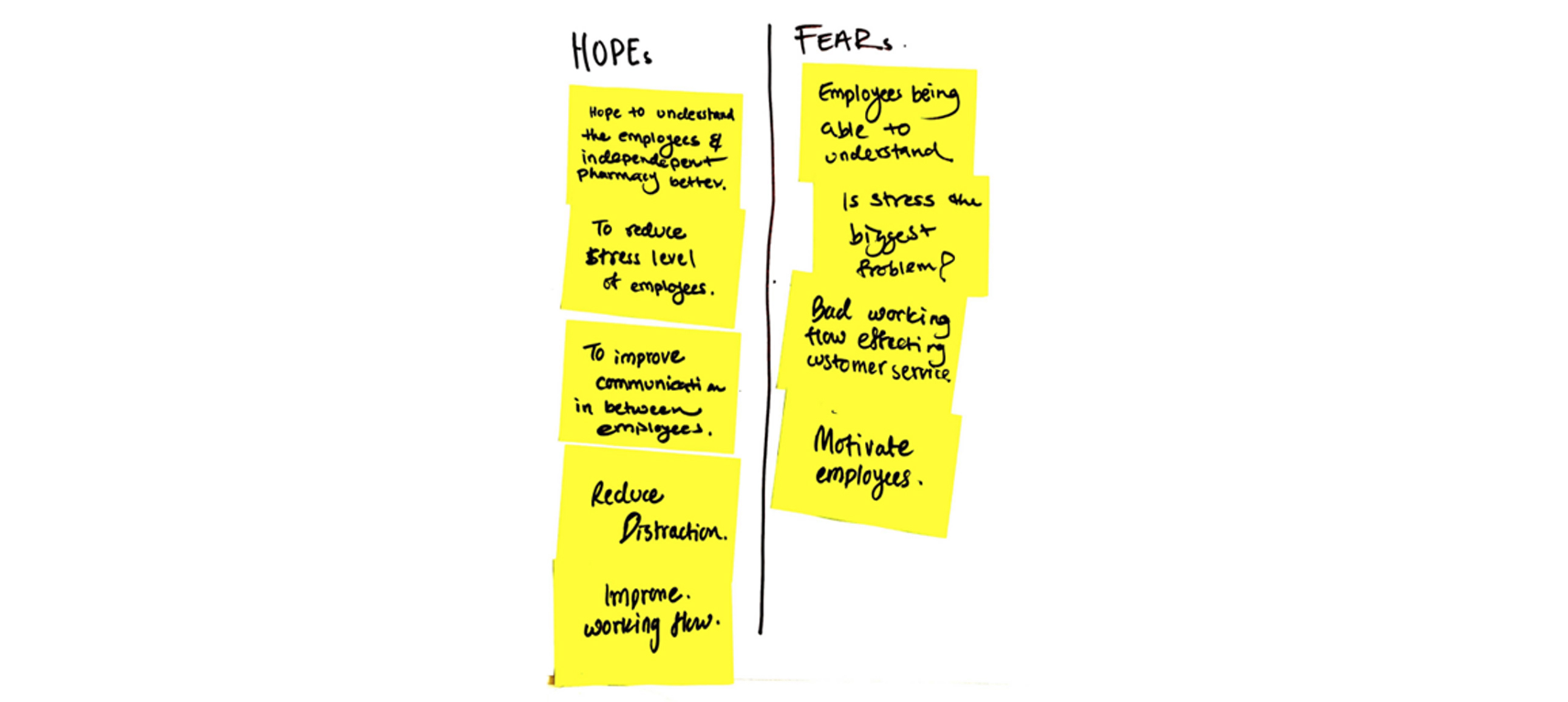
Through this step, I understood the emotional state of independent pharmacy employees and reduce the stress level and distraction of employees as that was one of the findings from observation and interview process. Other hopes that were listed to improve communication and workflow of employees. Some of the fears at the beginning of this project were employees not being able to understand the new training and motivating them to complete the new training system.
For this step, questions were formed out of any problems or concerns that was discovered in the Hopes and Fears step. Questions help figure out specific ‘features’ or ‘requirements’ for the solution that will be created. There were very specific How Might We (HMW) questions written to target ideas that can be taken to next steps.
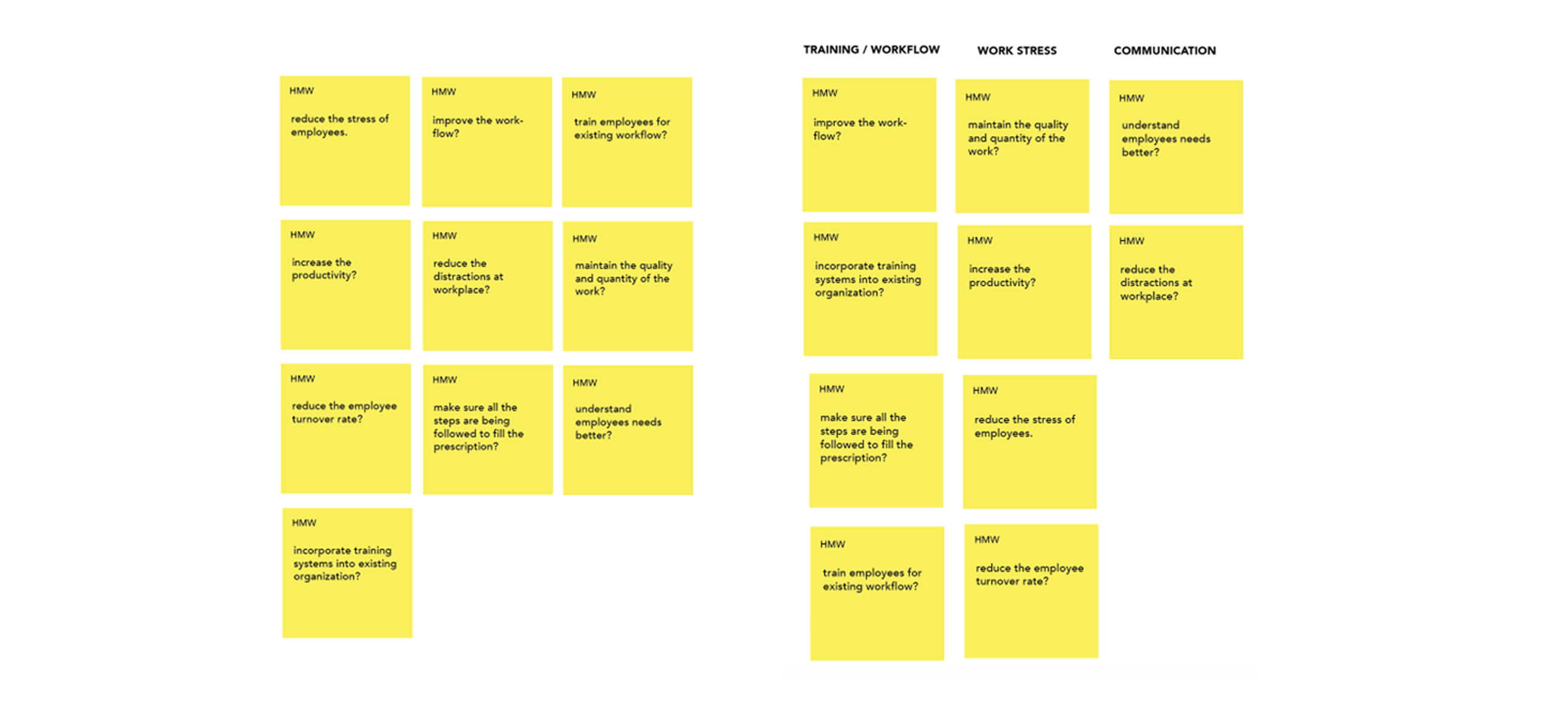
Some of the most important HMWs that addressed the gaps discovered in earlier observation were: How might we make sure that all the steps are being followed to fill the prescriptions, how might we improve the workflow, how might we increase the productivity, and how might reduce the stress of employees. After writing down the HMWs, they were organized into categories to understand which areas needs the most help. HMW outcomes indicated that the top three categories that showed promise for investigation were: Communication, Workflow/Training, and Burnout.
After completing the hopes and fears, HMWs, survey results, and observation steps, it was discovered that out of all job titles, technicians, pharmacists, and owners, that were studied in an independent pharmacy—technicians had the most gaps identified for improvements. Technicians have the most important job duties after the pharmacist, as they are responsible for filling and dispensing medication. Lack of training, along with the effect on medication safety that technicians have in the pharmacy let the researcher to target these employees for new training system. Out of the three gaps that were discovered workflow/training was the one that was identified as the most immediate problem. Workflow and lack of training can lead to other problems of stressful environment in store and errors in dispensing medications.
The focus of this training system is to reduce stress levels of employees working at an independent pharmacy by making them feel competent working in a busy store environment. For this research, the researcher will develop a new training system designed and tested for employees of independent pharmacies to train with their current workflow while reducing their job-related stress.
Some of the outcome ideas from these Crazy-8’s sessions included: Training videos, info-graphic book or poster that can stay in pharmacy for employees to refer easily to, online training portal, medicine bottle label redesign to add a to-do list to go through to avoid missing any steps. Some sketches included to improve the communication between the employees by redesigning working space, regular staff meetings and communication portal. (Figure 6 & Figure 8) These ideas were then prioritized by use of HMWs generated in last step sticky notes to understand which solution helps to solve the most problems discovered in HMW steps. (Figure 7 & Figure 9) That helped identify top three solution ideas, which were prescription redesign and training app / website for employees to go through as well as live training helper application for in store.
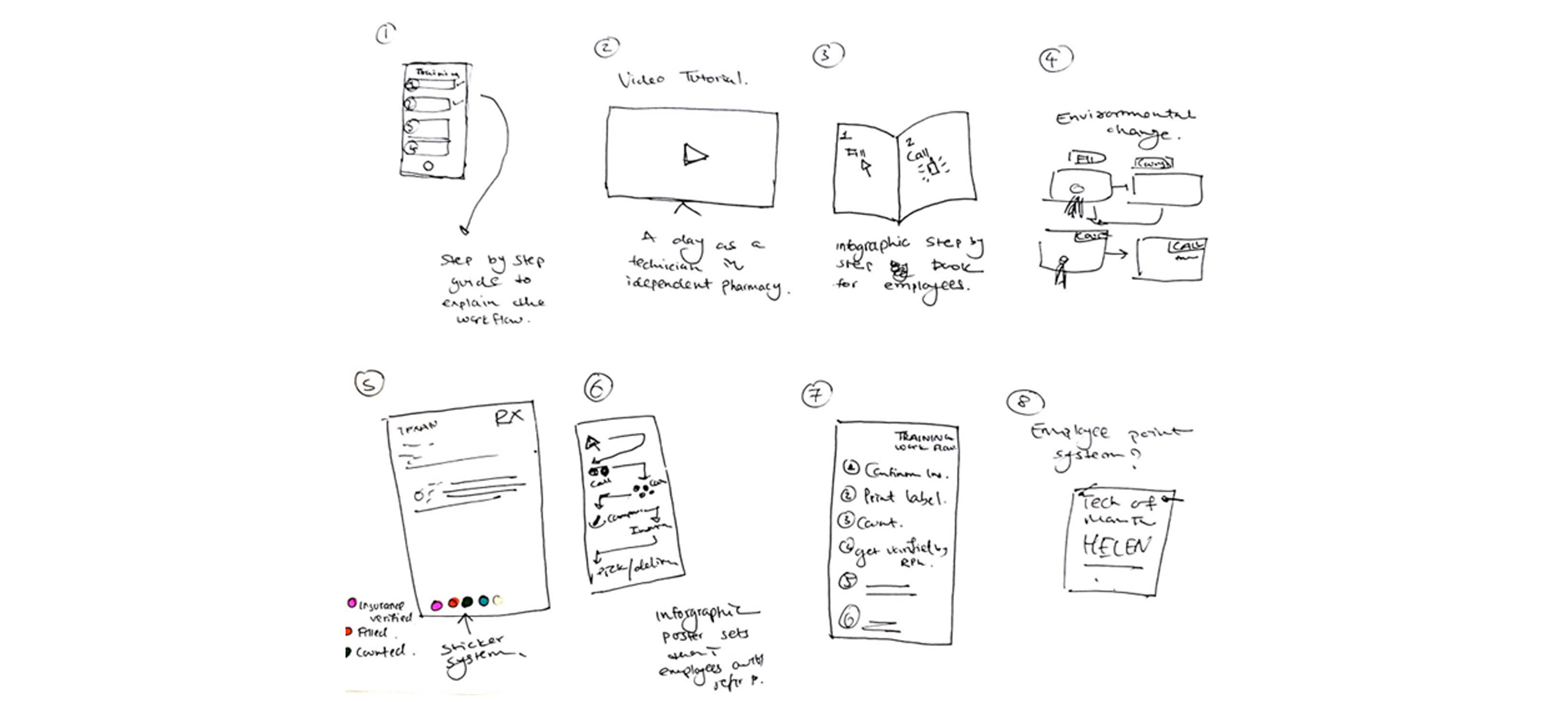
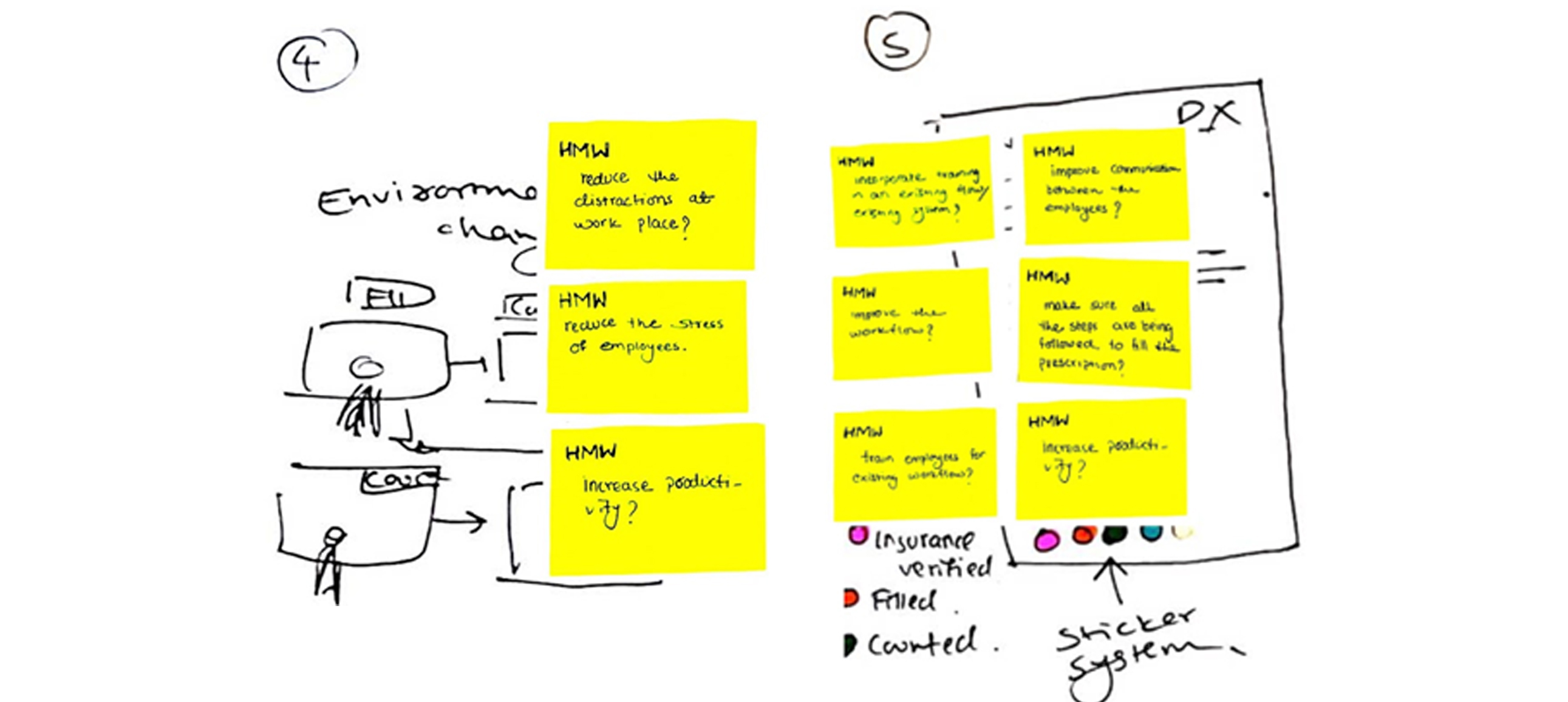
Every decision made in creating this prototype, the user and the long-term goal was kept in mind. The goal to train technicians of independent pharmacies with their current workflow to reduce their job-related stress.
This was the final prototype which was tested. But to view other prototype ideas I proposed please refer to thesis pdf.
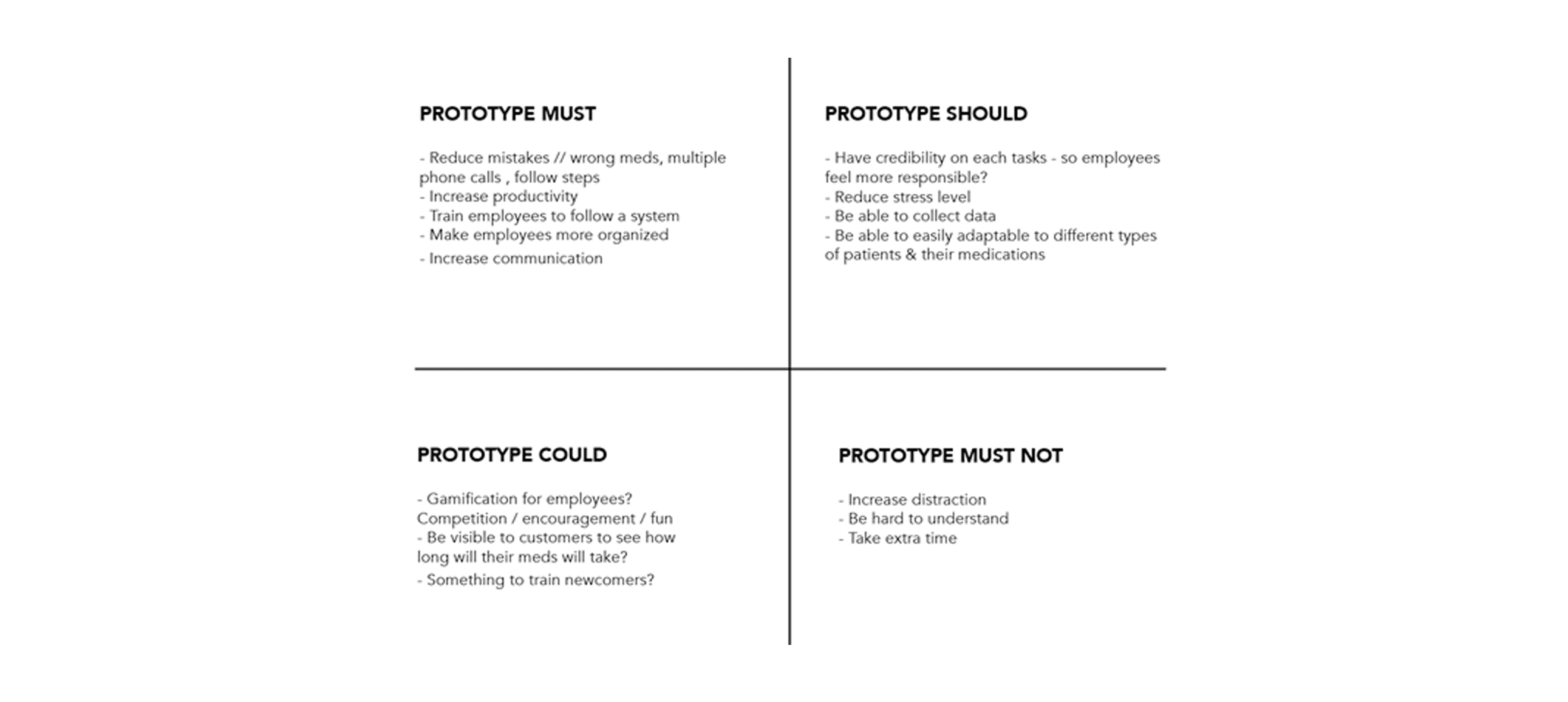
This prototype will target a web based training so it can be easily created and updated more economically compared to a mobile app, specialized hardware, or other digital mediums. The training must be completed in the store, however, technicians will be able to review the chapters at home. This training will require making an account using technician license number or tech trainee license number to help owners keep track of their employees training.
The prototype consists of two parts: An online training and a subsequent live training. Live training will be used to collect efficacy test data to validate the research.
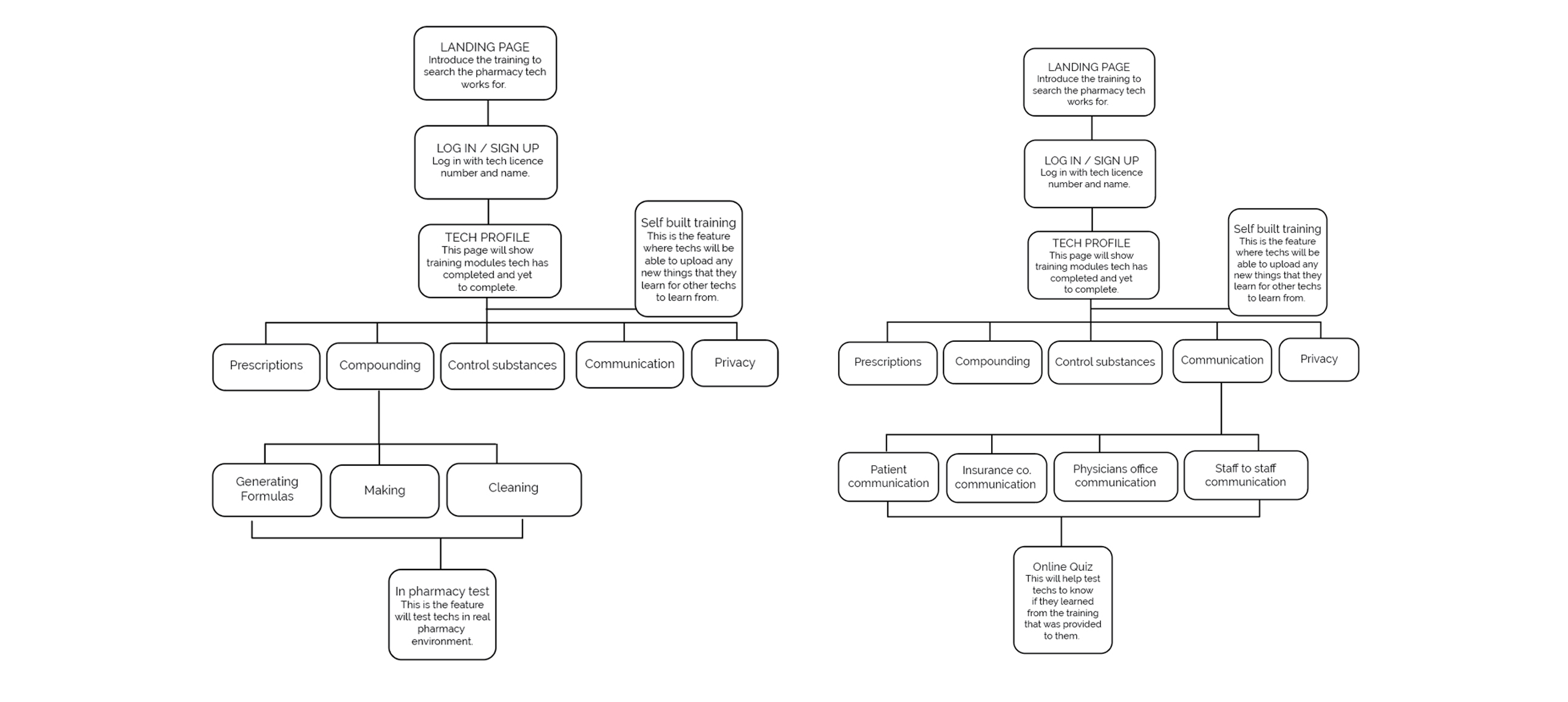
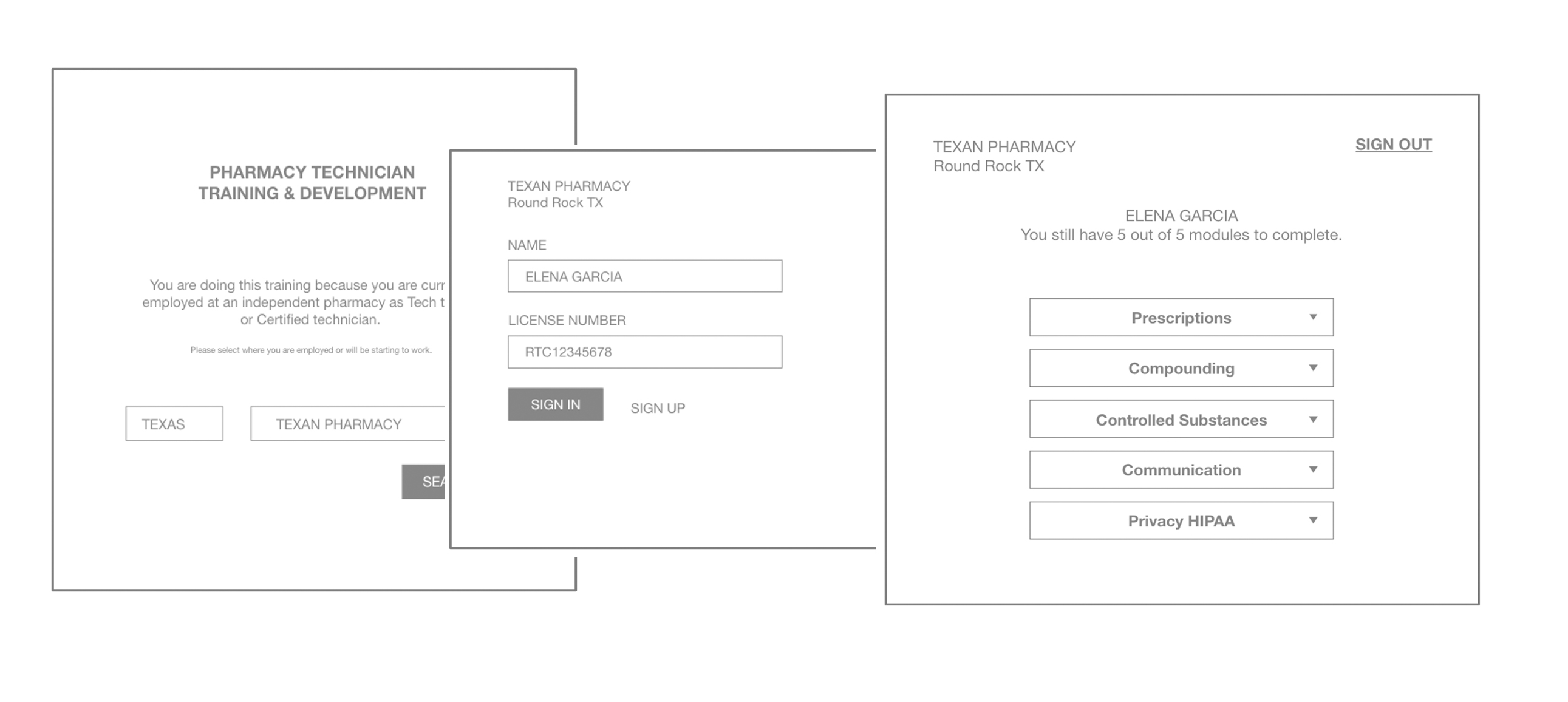
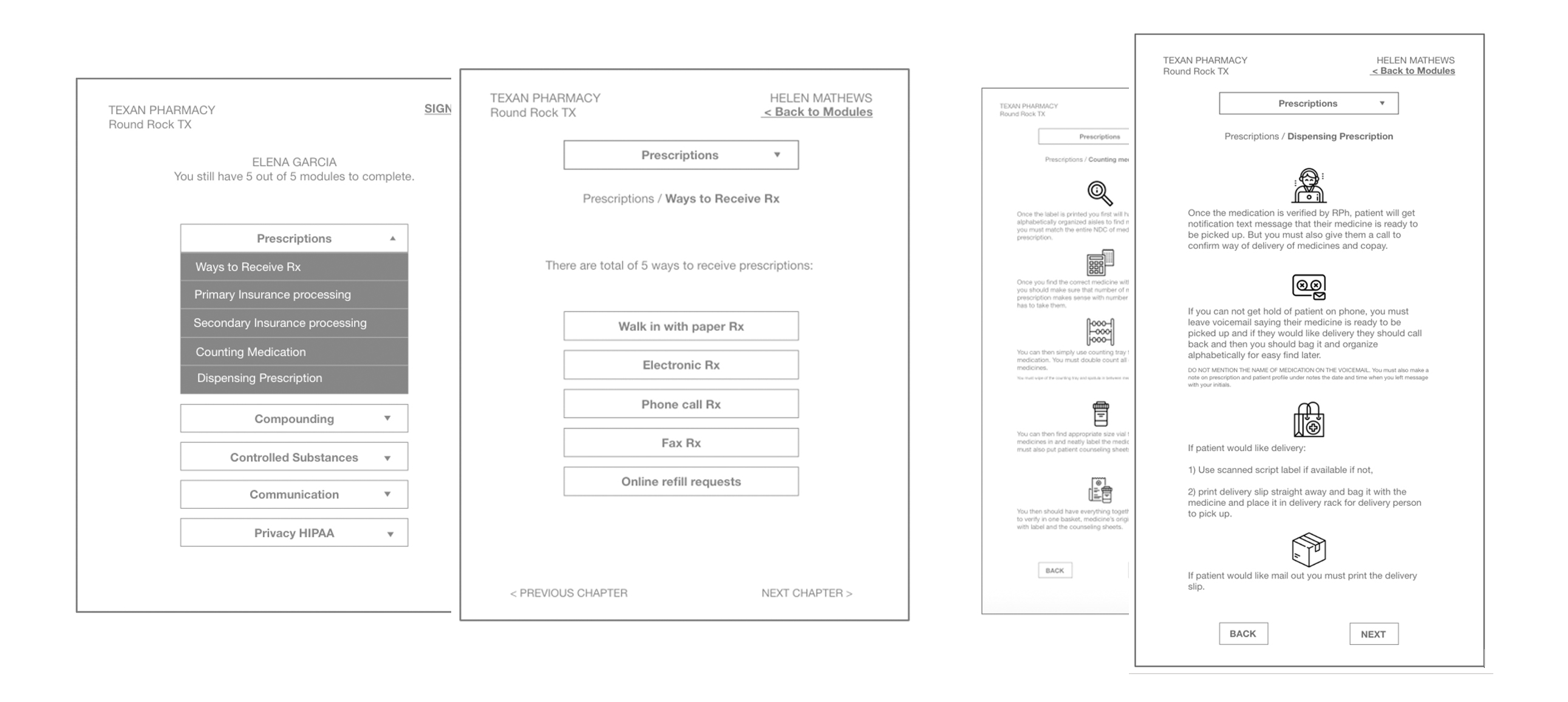
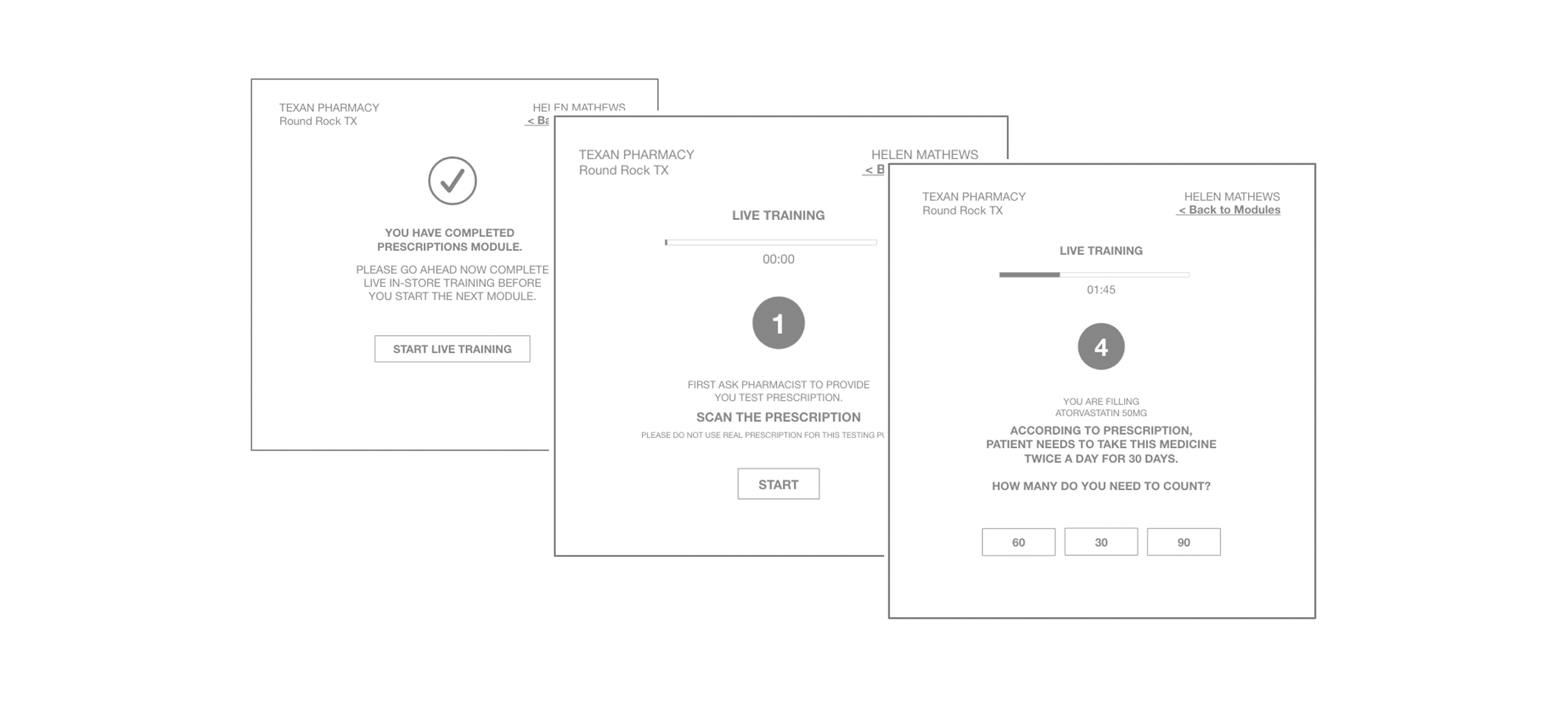
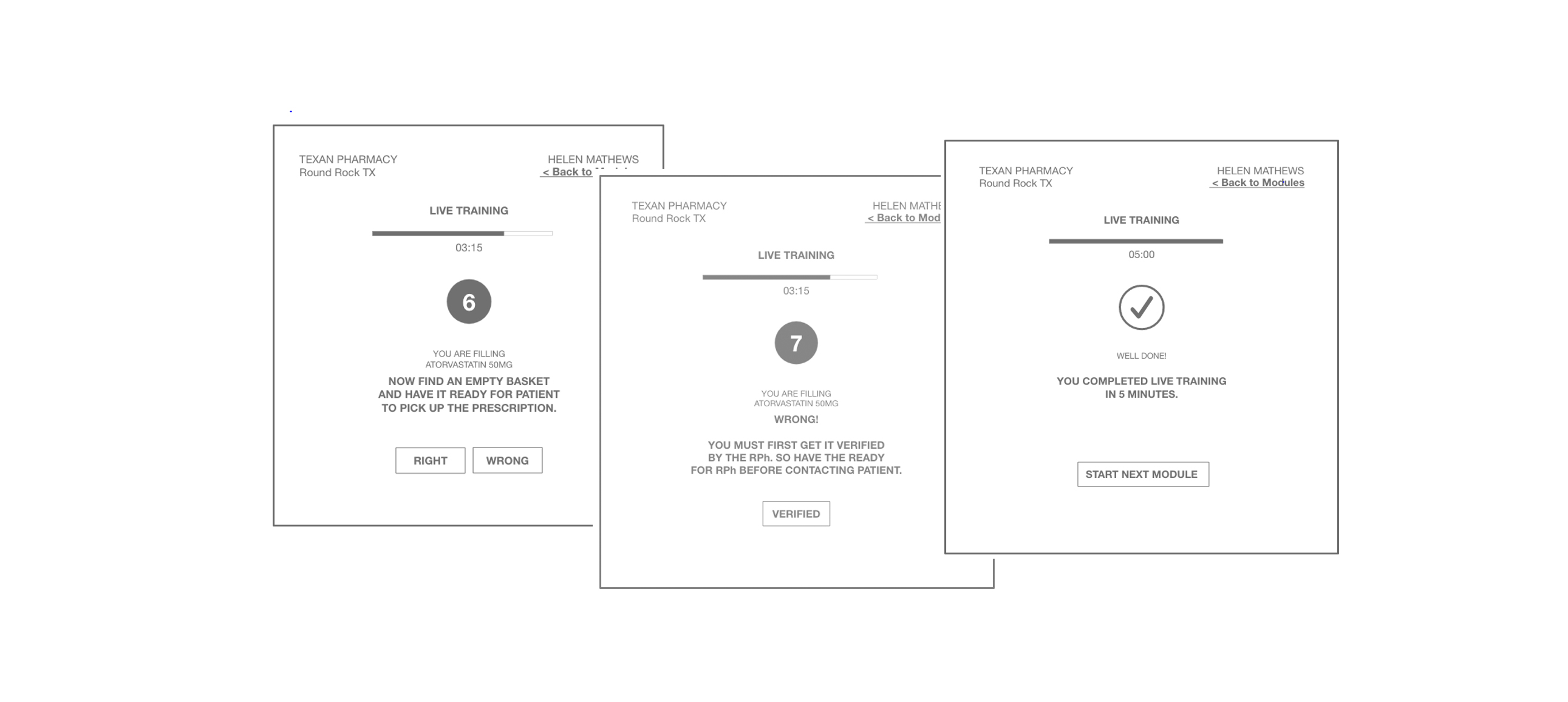
To test the results of the research outcome, technicians were split in two groups. A Control group and a test group helped identify differences in performances with and without going through the training process. The control group consisted of 2 technicians and test groups consisted of 4 technicians. The test group was asked to fill the prescription by following the steps through live-training application which helped record the data for time on task


This thesis research studied the training system for technicians of independent pharmacies. Test results of the one module tested, indicated a reduced time on task and reduced job-related stress—as indicated by user testing of prototype and efficacy testing to validate the system.